|
Ok, I know I’ve been gone for some time. It’s taken me some time to find my voice again, so here we go. For the past few years, I’ve been questioning and relearning my entire university education as it’s been clear to me that a University Degree based on Racist propaganda filled with industry influence is not sufficient to help my athletes or my clients. One of the first things that I questioned is the importance of the Calorie. Before we get into it. Calories are units of energy. In the nutrition world, the Calorie (Cal, kcal) is defined as the amount of heat needed to raise the temperature of 1kg of water at sea level. The calorie was first introduced by Nicolas Clement as a unit of heat in lectures between 1841-1867. In 1879, Marcellin Berthelot distinguished between the confusing “small” calorie and what we now know as the modern “big” Calorie/ kcal. None of that is really all that important other than to show that the very idea of the Calorie hasn’t been revisited since the 1800s, and that’s a problem. Currently, the way we understand Calories is by the scientific understanding where chemical reactions dictate the amount of calories/ energy per gram of a specific macronutrient (Fat contains 9kcal per gram, carbohydrate and protein contain 4 kcal per gram and alcohol contains 7 kcal per gram). This means that our understanding of the Calorie from a nutritional standpoint is PURELY theoretical and PURELY from a chemistry understanding of what happens when we burn or combust these foods/ macronutrients in a lab setting. What about the human body? As far as I know, no one in Health care bothered to challenge this since the 1800s. No one really bothered to look at HOW the body ACTUALLY uses its calories. That seems REALLY stupid to me. There are clearly differences in not only the way the body processes Calories from different sources (eg thermic effect of food related to protein intake vs carbohydrate intake) but also the body uses Calories differently depending on it’s Hormonal Status. There are a few different types of hormonal status in the body but let’s talk about the two primary status types – Anabolic and Catabolic AKA Muscle Building and Starvation Mode. I’m not going to deep dive into them (yet) but I just wanted to cover them really quickly. The Anabolic Hormonal Status or Muscle Building is dependent on many variables. Some of those variables include the types and frequency of physical activity, any hormonal changes brought on by diseases or general inflammation, your age, sleep habits, circadian rhythms, stress management, Gut bacteria management, nutrition intake, nutrition distribution as well as timing (Just to name the heavy hitters). It’s the hormonal state that effectively helps you build lean muscle mass and is properly fed to burn calories from organ function and physical activity. It’s the optimal hormonal state for EVERYBODY. The Catabolic Hormonal Status or Starvation Mode is simply dependent on the dysregulation of any of the above, forcing your body to change its overall goal from rebuilding and remolding organs and muscle mass (Anabolic) towards Starvation Mode (Catabolic), where the body’s primary goal is long term survival. But what does long term survival mean to the body? Whether we like it or not, long term survival to the body means suppression of Basal Metabolic Rates and Increase Energy Storage, AKA suppression of lean muscle mass building/ remolding and Adipose Tissue gain AKA Lean Muscle Mass tear down and the building of fat mass. The reality is that the bodies are constantly trying to survive as if we are still hunters and gatherers, as if there wasn’t an abundance of food and nutrition in our environment. It does this whenever energy/ caloric intake is reduced long term – The reduced energy/ caloric intake will always lead to hormonal changes that stimulate appetite, reduced basal metabolic rate and an increase in caloric intake. The hypothalamus (area of the brain that is important for hormone production to maintain homeostasis, or hormonal balance, for the rest of the body) rebalances energy intake and expenditure depending on the factors discussed above (eg sleep, physical activity type/ frequency, meal timings etc). The result is hormone dysregulation where you’re always hungry and never feeling full from your meals. Which always results in a food binge, re-creating the yo-yo diet effect causing more metabolic damage, which further prevents any successful body composition changes (more on that metabolic damage in future posts) The result is less lean muscle mass, more fat mass gains and more metabolic damage – leading to more fat mass gain long term and INCREASED resistance to lose that fat mass later on in life. So then why do Healthcare “experts” still give out the garbage advice to “Eat less and move more”? This is not only bad health advice; this is damaging health advice. The reality is that the body’s hormonal state determines what it wants to DO WITH those calories. It doesn’t matter what your goals are or what you do from a nutrition or physical activity standpoint if your body thinks its starving or continually stressed out. The body decides what to do with the nutrition. And the body will always choose survival if something is wrong, therefore it will always choose fat gain. It’s time we started to rethink calories, because it’s more important to start feeding the body in a way to optimize it get it to build muscle and burn fat for us, rather than restricting calories and preventing the body from working optimally.  Ben Sit, RD, Sports Dietitian President of ESN Complete Lifestyle Management
5 Comments
I love gaming! I always have and during Toronto’s latest COVID-19 related lockdowns, the new-gen console and major title releases and DLC packs, I’ve been gaming more than ever and my triathlon pre-season training is completely on track! Many people are baffled by gamers and they’re usually at the brunt end of stereotypical comments about physical inactivity or a diet consisting largely of take-out foods, soda, snacks and energy drinks. This is something I’ve never understood because office workers don’t get the same type of criticism or scrutiny yet their lifestyles are largely the same. So as a gamer and someone that’s also been forced to work fully from home because of this pesky Pandemic, I thought it would be the perfect time to share my health tips for a full day of working and gaming! Physical Activity Ok, let’s talk about physical activity DURING a gaming session! Whether you’re working/ gaming from mouse and keyboard or gaming with a controller, you’re most likely sitting in a chair, hunched forward. Staying in this position for too long can cause excess strain on your neck and back. For me, strains and pains in my body will really distract me from either working or gaming and I find simply stretching every hour to be the MINIMUM to keep my body in an ergonomic position for long periods of time. My optimal is fitting in a light workout DURING a gaming session. I do this by keeping a list of 5 exercises and some minor equipment nearby my desk or gaming chair – resistance bands and a small weight. I then rotate through all those exercises for 10-15 reps at each loading/ wipe screen or every 15 minutes! Depending on the type of game you’re playing you’ll fit in a big workout! I typically rotate through:
Meal Prep and don’t skip meals If you’re anything like me, then your mind can get lost in work or a gaming session and you can forget to eat. Irregular meal timings can cause blood sugar fluctuations which can drive mindless eating as well as affect your ability to focus. Fluctuating energy levels shouldn’t tell you that you need caffeine, it should tell you that your meal timings are off. Many gamers and office workers usually take fluctuating energy levels as a sign to reach for an additional cup of coffee or energy drink. Unfortunately, excessive caffeine intake can really mess with our REM sleep cycles and impact our body’s Cortisol’s (Stress hormone) levels. I also find that my reaction time is better but my in-game performance is much worse with too much caffeine – similar to excessive caffeine intake in athletes – increased physical output with decreased processing/ mental processing time. Knowing this about myself, I have to protect myself from self-sabotage as I wouldn’t want a gaming session to negatively impact all my triathlon training, so my answer – meal prep. I always make sure I have a full day’s worth of food prepped up before huge gaming sessions or work days with giant client loads. This way I don’t panic or stress out about not having enough time to cook. I also set alarms to remind myself to eat. This way I’m set up for success and I’m not sabotaging my workout recovery! Hydrate This one might seem obvious but its really not. Many Office Workers and Gamers have purposefully stayed dehydrated during working or gaming hours out of fear that the urgency of needing to pee will distract them from gaming sessions or workflows. Additionally, many people don’t realize how important it is to stay hydrated during the winter. This is because things like indoor heating or humidity changes can really dehydrate someone quickly. Hydration is important not only to have the body and brain to function optimally but it’s also important to recognize how the body will create cravings if it's dehydrated. If the body is dehydrated, the thirst response isn’t directly triggered, it’s indirectly triggered by increasing cravings for salty and fatty foods in attempt to dry out the mouth to get you to hydrate. You read that correctly, if the body is dehydrated it tries to dehydrate itself more hoping that you’ll drink water instead of just directly stimulating the thirst response. Nothing is more distracting to me during a gaming session or work hours than a craving for anything. Its hard for me to focus and I hate the growing cravings for Doritos because the cheese is gonna get stuck in my controller! So instead, I keep a bottle of ice cold water next to me and aim to finish to before my next meal!  Get away from the screen This is one of the most important things for me, to get away from the screen. When I’ve been bit by the productivity bug or when I’m about to complete a really hard mission, it’s so easy for me to want to reheat my food and eat it while I’m gaming or writing blogs posts or chart notes. We always want to be fast and efficient, but then that was a pre-COVID19 world. Now that the world has been forced to slow down, let’s take more time to find better balance in our lives and slow down to reduce the stress of that pre-COVID grind and not have as much distracted eating in our lives! Getting away from the screen also helps with eye strain, especially at night time! Speaking of night time, I ALWAYS make sure I cut off all screen-time at least 1 hour before bed to reduce blue light stimulation, allowing my body to get ready for sleep! So I hope these tips help you out as much as they’ve helped me for the past 15+ years gaming and recently working fully from home. Now if only I could get my hands on a Playstation 5 so I can load up Destiny 2’s Deep Stone Crypt or get ready for Cyberpunk 2077, I’ll be set for the rest of this lockdown and until this winter is over! Ben Sit, RD, Sports Dietitian, Gamer President of Evolved Sport and Nutrition Complete Lifestyle Management Am I going crazy or did the world forget about Movember? The month dedicated to Men’s Health awareness seems to be losing traction year after year, which is truly disappointing because Men’s Health is EXTREMELY important! As a Man, this trend worries me so I had to question it. Is it that Men’s health isn’t the most important thing during a pandemic? Is this because of toxic masculinity? Or is this because the popular concept of Self-Care is one that not a lot of men can identify with? I will tell you that as a Male Racialized Dietitian, I am a Unicorn. Luckily, people notice Unicorns and, in my situation, Men have taken notice. The amount of Men that contact me simply because they feel safer being vulnerable and open to another Man is something I never thought of, but it’s definitely a thing. Men care about their health, but I can tell you that Men have difficulties talking about health. From what they tell me, it’s because they can’t connect with the majority of health posts that exist online and especially in social media. I mean, look at the image below, the truth is the majority of self-care articles or posts look like this, so I can definitely understand why it might be excluding people from that concept. It’s time this changed, because HEALTH IS FOR ALL! This below picture is much more appropriate, too bad it isn’t what’s trending. First of all, what is Self-Care? Self-care is any activity that is done with the intent to take care of our mental, emotional and physical health. It’s a concept that seems simple, but is often overly complicated or some element of consumerism is put in. Self-care is essential to improved mood, reduced anxiety, better mental, emotional and physical health (Which is all extremely important during the COVID pandemic – as I write on the first day of a 28-day Lock-down for Toronto and Peel Region, where I live). Most importantly it’s essential to having good relationships with yourself and others. OK, I get it. The above description of Self-Care is really vague and arguably too inclusive for someone to be able to grasp the concept and confidently start establishing a self-care routine. So, let’s talk about what self-care ISN’T! One of the most important things to note is that Self-Care is not forcing yourself to do something that you don’t want to do, despite how much someone else is raving about the benefits of the new “X” trend. Self-care also isn’t selfish. This is especially important for Men to know, so I’ll say it again. SELF-CARE ISN’T SELFISH! Self-care allows you to take care of yourself so you can be the best version of yourself for your own health but also for your loved ones around you! In my experience I have found this to be extremely difficult for Men to understand, so I use an Airplane analogy – You put on your own oxygen mask before you can help others – Meaning, you can only take care of other people once you’ve taken care of yourself. Essentially, Self-care is the key to living a balanced life. It means that you’re able to take care of yourself and your own needs to effectively. So where do we start? Well there are three Basic rules or guidelines to creating a self-care routine;
It’s also important to note that Men often get criticized for doing things for self-care and its bullshit. One important aspect of my own self-care is Video Games. I love them and fun fact: The average age of a video gamer is 34 years old – that’s exactly how old I am. I resent the idea that Men are immature because they like doing things that they did when they were kids too. Video Games - like books, movies and media in general – is escapism but video games have become so much more. You actively problem solve, are immersed in a world of creativity where you’re not limited by physics or your own body’s limitations, you get rich story telling and most importantly there’s SO MUCH SOCIAL SUPPORT IN VIDEO GAMES! (Once you weed out the Toxic Gamer communities that is) I have made the BEST friends while online gaming. There are people from all over the world that I’ve met with rich relationships that offer real social support. I remember a few years ago, a bunch of our friends logged on just to chat and offer social support to a guy in Norway because he just lost his father and is now living alone in a small village! We didn’t even play! We just talked! I remember how all these gamers rallied together during the COVID lockdowns to help me while I was sick in bed with COVID, barely able to breathe. We’re not just gaming, we’re spending time with our friends! Now with that being said. I want the men that are reading this post to really think about self-care in a different way. Self-care isn’t just the Instagram posts filled with bubble baths and wine – if that is what you genuinely love and that would recharge your batteries then you do you! I’m just speaking to the millions of stereotypical social media posts that many people in general do not identify with because the predominant view of self-care is an entitled and privileged act – when in fact, it is securing your own oxygen mask before helping anymore else out. So, before Movember is over, I beg everyone consider the importance of Men’s health again, especially during the pandemic. I CHALLENGE you to pause, reflect and think about the things in your life that you need to recharge your batteries and to do it for 2 weeks straight. Then I challenge you to compare yourself, your thoughts, your behaviours and your energy from before and after the 2 weeks are done. And then I want you to meet a better you. And if you’re struggling with this, contact us. We will gladly help!  Ben Sit, RD, Sports Dietitian President of Evolved Sport and Nutrition Complete Lifestyle Management Just for some inspiration to everyone out there, this is the self-care routine I redid after I recovered from COVID
It’s no surprise that we now live in a very different world now because of COVID-19. The way we work, play and live have changed dramatically. For some this has been a really great thing. It allowed them to destress, to remove daily stressors that affected their physical health, it allowed people to focus on things that they didn’t have the time to before, it let people heal. Unfortunately, I was not one of those people. Getting COVID-19 back in March was truly a life changing experience. Having caught it just 2 days before the Canadian lockdown was truly one of the scariest moments of my life. Not wanting to add to the public panic and confusion, I hid the fact that I had COVID. I hid the issues and symptoms I was experiencing. I didn’t tell anyone that I had contracted it, I didn’t want to be a burden to anyone else and I certainly didn’t have the energy to connect with anyone. The symptoms got worse day by day and hour by hour. The giant shifts of energy blew me away. There would be periods of time where I would have just enough energy to stay awake while streaming reruns of my favourite sitcoms and then there would be days where I wouldn’t even have enough energy to get to the bathroom properly, I had to crawl and support myself to prevent for any potential falls. My insomnia was exacerbated, sometimes sleeping 2 hours total and other times I would sleep 16. Breathing was difficult at the best of times and at the worst, I had my thumb hovered over the call button as I pre-dialled 911. Eating was extremely difficult. Aside from flavour changes, appetite would be all over the place. One moment a simple cracker would keep me full for the entire day and the next moment I couldn’t stop eating. And then there was the emotional side of everything. Social media became detrimental to my life and feelings of isolation and fear grew more and more. Luckily, I got out of the danger zone and survived. After 2 weeks, I was out of immediate danger but now was dealing with the side effects, which were all of the above, just more inconsistent and with a few new ones! It would take me the next month or so to fully realize the damage that was done. Alcohol would now seize my liver and cause immense gastric pain at 1 standard drink! Mood Swings and emotions would come wildly and inexplicably. One minute I would be watching one of my favourite comedy movies and then I’ll be crying for no reason whatsoever. I would go out for a quick 5k run and would get “breathing attacks” multiple times during the run and would need to walk (For context, I was training for a marathon immediately before infection running 60-70km per week with no issues at all) All these side effects still occur to this day, although at a significantly lower rate and this past Thanksgiving long weekend was the first time since COVID that I ran a 5k without stopping. So what now? I was pushing myself to get back to where I was with my old health goals. I put more and more pressure on myself to be a better athlete, entrepreneur, friend and person. I kept pushing until one day I finally asked myself; why? Why was I pushing myself so hard athletically? All races have been cancelled Why was I pushing myself so hard to be emotionally available to others but neglect my own needs? Why was I forcing myself to be the old Ben and meet the old Ben’s goals? I was not the old Ben anymore. I failed to recognize a very important fact, that the old Ben cannot exist anymore. Our old world does not exist anymore. When I fully realized how much damage I was doing to myself through my old goals, I felt embarrassed. I was embarrassed because I preach balance yet my life was anything but balanced. The world had changed and I needed to as well. Forcing myself to stop and reflect was exactly what I needed. It allowed me to better prioritize goals. It allowed me to slow down and give my mind and emotions a rest. It allowed me to set more realistic goals. It allowed me to redefine what ‘Healthy’ means to me. Now, there’s a great emphasis on balance. There’s more empathy and forgiveness if I didn’t hit a training goal. There’s more understanding if I didn’t hit every one of my daily business goals. That understanding helped me come to terms with what COVID is still doing to me. It helped me come to terms that my lung capacity has likely been permanently reduced by 20-30%. It helped me establish a new self-care routine to attempt to get my sleep back on track. It helped me redefine how I define health.  Now we as a society sit on the cusp of something big, but we are definitely in a limbo. This limbo doesn’t need to be bad like most limbos but rather we can be opportunistic! Before whatever new world order we move into in the post-COVID era, there is a wonderful chance for you to re-evaluate your health goals. You might have more time to now focus on your health goals, especially as we move into the winter months. And I highly recommend you do. Your life might be put on hold because of this pandemic but this might JUST be that time you’ve needed to finally focus on ALL aspects of your health. What new goals will you be setting? We can help! P.S. there’s something HUGE coming at ESN at the end of the month. Stay tuned because the entire ESN team is rested and ready to go! Ben Sit, RD, Sports Dietitian Owner and President of ESN The greatest wealth is Health Hi all, I know I haven’t written or posted anything for a while and there are many reasons at play for that but with the recent current events, inaction and silence are no longer an option. The events surrounding George Floyd and systemic racism against BIPOC communities has caused many to pause and reflect about the systems and institutions that we participate in, including myself which sparked this post. Some may think that my position is rather dramatic, I would argue those people who think so are proving my point; that Nutrition and Dietetics is systemically racist. To be clear, I am not saying ALL Dietitians or Nutritionists are racist (although there are MANY that are knowingly or unknowingly engaging in overt or covert racist behaviours) I am saying that the way Dietetics is practiced is fundamentally & systemically racist which is the fault of the organization and in part the overall healthcare system. Please understand the difference between overt racism and covert racism (Please see attached educational graphic developed by Safehouse Progressive Alliance for Nonviolence (2005) and adapted by Ellen Tuzzolo (2016)) The reality of racism in Healthcare is very real. The Center for Disease Control examined pregnancy-related deaths in the United States from 2011 to 2015 and even more detailed data from 2013-2017 to show that black women at 3.3 times more likely than white women to suffer a pregnancy -related death. Native American and Alaskan First Nations women were 2.5 times more likely to die than white women. In 2005 the Institute of Medicine (Not-for-profit, non-governmental organization now known as National Academy of Medicine (NAM)) found that “Racial and ethnic minorities received lower-quality health care than white people – even when insurance status, income, age and severity of conditions are comparable.” The NAM Report goes on to quote a study of over 400 hospitals in America that showed black patients with heart disease receiving older, cheaper and more conservative treatments than their white counterparts. They go on to state that Black patients are more likely to receive less desirable treatments. “Oh that’s America, Canada is MUCH Better” I can assure it’s not. If you Google image search “nutrition” you will primarily find pictures of White Women eating salads. If you Google search “graduating class” images in nutrition programs across the country, you will find minimal diversity and any diversity that exists exhibits white-passing privilege. If you Google search the current iteration of the food guide you will only find Euro-Centric and North American-Centric foods. If you go on a Government funded website you can find behaviours and actions that fundamentally erase or minimize ethnicity or downright uses OFFENSIVE RACIAL SLURS!!! (Yes, these are REAL screen grabs I took from this unnamed Government Funded website as of June 1, 2020 at 9:59am). But wait! There’s more! There are two ways to become a Dietitian in Canada - An expensive Master’s/ Diploma Practicum program or a 9-month unpaid Postgraduate Practicum Program (Formerly known as the Dietetic Internship) followed by a standardized written exam. That’s right folks! After 4 years of University and student debt our options are to go further into debt OR to try to survive for 9-10 months without an income OR realize that the degree that you now have doesn’t qualify you for anything. Did I also mention that many of those Dietetic programs are in Toronto? Where we have INSANELY high cost of living rates? Did I also mention that HUNDREDS of Dietitians were also told that if they were working a part-time job during their “Prestigious” unpaid internship that they weren’t taking it seriously and forced to quit? Did I also mention that the Dietitians that are supposed to be teaching these “Prestigious Unpaid Internships” aren’t properly trained to be teachers at all? Why is that last one important? Well remember those racist Dietitians? They pass on racist thinking and ideals, whether it be overt or covert racism. Want to see the height of systemic racism in Dietetics? Look at the cultural erasure in the practices of not only the screen grabs but look at Canada’s Food Guide. NOT ALL CULTURES AND ETHNICITIES EAT USING A PLATE MODEL! By getting rid of portion sizes we lose a universal language to communicate; numbers and math. Which is extremely important when counselling with a language barrier! If you want to justify the removal of portion sizes based on current research, then how do you possibly justify the reduction in numbers and frequency of foods and ingredients from other cultures visually represented on the plate model. Oh, you like the food guide because it promotes mindful eating? Well have you considered what a LUXURY and PRIVILEGE it is that your food security is so good that you don’t have to worry about where your next meal is coming from? rather you worry about HOW you’re eating the foods and whether or not you’re enjoying them? Have you also considered how privileged you are to be able to AFFORD to follow the advice on the Canadian Food Guide, which even when you follow does not meet all daily nutritional requirements? The problem here is that the individuals that designed this dumpster fire of a Government funded resource completely FAILED to think about anything other that a Euro and North American-Centric view of eating and food. (To date, I still cannot find a list of the people that were responsible for their “expert” input into this back up single ply toilet paper document to see what the diversity was behind that panel because it’s my guess that, AGAIN, no one bothered to care about it). This is the example that takes the cake and it is my personal story that I have avoided making public until now. Years ago, I accepted an extraordinary position, a position where I would be able to help diversify this profession and begin to undo the vast amount of damage done by a poorly run organization. Unfortunately, like other POC, my position was an example of Tokenism. Now to be clear, I KNEW that this is what they were doing, however (at the time) I felt it to be my responsibility to represent ACTUAL diversity in the profession and ADVOCATE and discuss those issues that were being ignored every single year. As soon as that announcement went live and it was revealed that I would be representing Ontario, the biggest and most populated region in Canada, the complaints came. Countless colleagues from across Ontario complaining that I do not represent “them” and that they were outraged. To those that complained, I want you to read this very carefully; I DON’T CARE THAT I DIDN’T REPRESENT YOU! I endured the stones thrown at me, because as a POC this is what we deal with OUR ENTIRE LIVES! But I finally snapped when over 2 years of my advocacy, volunteered time and efforts were COMPLETELY ignored when they chose to celebrate Nutrition Month with a COMPLETE LACK OF DIVERSITY promoting only images of White Women or women of White-Passing privilege for nutrition month. The reason I was given was to celebrate the Award winners from last year and to give recognition. Forgive me if I’m wrong, but they were already celebrated LAST YEAR, weren’t they? Their achievements were publicly well known, so why do it again? Why not focus on other members and their achievements? The other explanation I was given tried claim that they were promoting diversity in PRACTICE SETTING – this is not only bullshit, it’s insulting. Furthermore, when that project was announced 3 years ago, one of the markers of success would be 80% satisfaction amongst that organization’s members, that now means something VERY different to me. Because that now means to me that 80% of your members satisfied with the systemic racism in your organization. You think this is personal? I assure you it’s not. There are MANY examples of Dietitians from marginalized communities and those that represent true diversity that have put in so much work to create free resources, webinars and materials only to have them be completely ignored. Examples of male Dietitians putting together resources and action plans on how to attract more men to this profession to be able to better address Men’s health issues and to provide more options for counselling, only to be ignored. Examples of BIPOC Dietitians having their resources appropriated by White counterparts without acknowledgement of their work. White Dietitians using cultural events like Ramadan or Lunar New Year for their social media without acknowledging the culture and history just because that particular hashtag is trending. Those Dietitians have shared their stories with me but haven’t spoken out for fear of losing their jobs or being ostracized or wanting to change the system from within. I simply don’t care what anyone thinks of me anymore. “OH Ben! That was a few years ago, it’s much better now!” Yeah, the promotional materials are now OUTRIGHT lying about the diversity that doesn’t exist in this profession. Look at the image below and look at the LinkedIn image above and compare it to the images used on the Government funded website. You could try to justify the idea of “Many people won’t know what these foods are” OK fair, but then explain to me why Shakshouska, an Arabic dish, or Khao Tom, a Thai Rice Soup, maintains it’s cultural and ethnic identity when OVERTLY racist terminology like “Oriental” is used to describe recipes posted directly in-front of a culturally insensitive “Proudly Canadian Beet and Barley Salad” (It’s not like Beets or Barley are an ingredient native to Canada like the Fiddlehead, and “Proudly Canadian” carries many problematic First Nations implications, which is shocking to see considering the vast number of Canadian Dietitians that work in First Nations populations) The reality is that Dietetics has avoided this much needed PUBLIC criticism for far too long. Dietetics has been complicit in supporting Systemic Racism and cultural erasure. Dietetics has become more elitist and privileged than EVER BEFORE. My concerns when I first entered the profession around 10 years ago have all become reality. We now see vulnerable populations getting worse health outcomes because communities don’t trust Eurocentric and Culturally irrelevant and insensitive information coming from predominantly White Dietitians. We see worsening men’s health outcomes because we don’t have enough male Dietitians available. We now see more and more requests for referrals due to cultural and language barriers. We see higher and higher private practice costs to meet an individual’s sense of worth more than their need to be effective for their clients and communities. I don’t care if you’re uncomfortable with the things I’m saying because they need to be said, and you should be uncomfortable. I don’t care if you disagree with my methods, you want them to be peaceful so it can be ignored. Ever since the change in leadership of this organization following a GIANT pay scandal of the previous management and direction, there have been some improvements. But as every other POC in the world knows, unless more consistent change is coming and planned, unless more people come out and speak about this without fear and without apology, unless you plan to change the systemically racist structure in Nutrition and Dietetics, we POC know that this “Change” is short lived and just a Public Relations move. Prove us wrong because this systemic racism affects the health of all of Canada. Black Indigenous People of Colour are being murdered in the streets by Police Officers but healthcare and Dietetics has been neglecting and devaluing their health and lives all along. No more excuses DO BETTER, NOW Rest in Power
P.S. Just for fun, here’s a list of just SOME of the prejudice, racism, sexism, elitism and discrimination I have experienced from my own colleagues. (Read this list and understand it. You do not get to tell a POC what is racist or how to feel)
P.P.S. Re-read my words before commenting. The nutrition world has recently had MULTIPLE cases demonstrating incapability to understand the written word. I also fully understand that this does not position Dietitians and Nutritionists in a good light – This is my full intent. It is unethical to continue to support a system that blatantly oppresses people based on their ethnicity and to discriminate them based on their economic status. So, if you read my words and feel the need to organize a petition for me to take this post down, then all you’ve done is give me a list of Racist Dietitians. We have a problem and there are FAR TOO MANY Dietitians that are silent and complicit in this racism. Hey hey hey! December is finally here and with that comes time for reflection and goal setting for the new year and the upcoming decade. First off, I’d like to thank all of those that have supported ESN in any way at all. Whether it be those that have received counselling from our Nutrition team, those that have enrolled in the ESN learning center or simply those that have consumed our content over the past 5 years. The support that you’ve shown has been overwhelming! I never would have thought that when I conceived and started ESN 5 years ago that it would grow to this, a nationwide company with multiple partners that has received recognition and praise from multiple communities. When I started ESN 5 years ago it was because I thought my training and education was lacking and that there was a better way to look at nutrition, physical activity and health. One that went far beyond my training as a Dietitian and a Personal Trainer. Before I started ESN, I pitched the concept multiple times and people thought I was crazy. They thought it was too ambitious and that it was impossible. Thankfully my stubbornness allowed me to have a Thanos moment and say “Fine, I’ll do it myself.” I love being the underdog and to take risks. All that negative energy just fueled my fire and the flames grew bigger and bigger to what ESN is today. ESN was founded on looking at things from a different perspective, to innovate by combining things together, finding patterns and translating all the complex science into simple to follow guidelines. To approach nutrition and health the same way GPS works in your car. To guide and instruct the driver, to re-route without judgement when things stray off course and to focus on the journey, not the end destination. Originally ESN was for athletes, those looking to push their limits and barriers because comfort is the enemy of growth. We have done just that. A small independently company that was working with professional athletes, celebrities and Elite Olympic level athletes. Today, we celebrate as we have multiple ESN athletes going for Olympic Trials and many that will make the Canadian Olympic team for the 2020 Tokyo Summer Olympics as well as multiple professional athletes across the country. While ESN was originally designed for athletes, our approach to nutrition soon became recognized by multiple communities and then our partners started coming. We started getting exclusive contracts to staff and train Dietitians to work in workplace settings that Dietitians traditionally weren’t recognized in. To this day, one of my greatest accomplishments is the fact that I created over 20 jobs for Dietitians in less than 3 years of business. Once ESN grew and we got our team together I started to make mistakes. These mistakes were, and still are, on me. My issue was that I was so focused on my client base and their successes that I failed to recognize the managerial shift in my position. My constant need to grow and help my own clients succeed, trying to help a whole Dietitian team grow their businesses, being the first Canadian Dietitian to co-create, write and host a Nationwide TV show, launching a podcast and trying to manage my own health, mental health and athletic goals left me spread far too thin. I would have burnout episodes lasting months. My depression would render me incapable of the most basic things. I neglected my own self care, health as well as my family and loved ones. This cost me friendships, relationships and would put a strain on my family. The worst burn out was this year, where my burnout episode coupled together with a massive depressive episode lasted 3-4 months. This caused me to drop the ball on multiple things, most notably the development of the Level 3 ESN Learning Center Sports Nutrition Certificate Course. For all this I offer my sincerest apologies. To those that registered, this will be addressed in a separate email. I finally realized this year, with A LOT of help, that I was my own worst enemy. In this recognizing this very sobering fact I have stepped back to refocus on building my own health, mental health and physical health back up. It also allowed me to knock my own ego down to absolute zero and rebuild, but this time with sustainability as the primary goal.  One of the hardest things for an entrepreneur to do is step back because we have done it our way for such a long time and we if we are still standing after 1-2 years (which is a huge success milestone for entrepreneurs) then it’s hard to let others in. After this most recent burnout episode, I realized the stupidity of my actions. I have surrounded myself with some of the best Dietitians and professionals in the industry but I didn’t utilize their potential and thus have not only come close to destroying myself and everything I’ve built but I have let them and those that look up to ESN down. This is on me, and I offer my sincerest apologies. Now having learned this lesson, I am proud to say that I now recognize what is truly needed of me and have developed plans to save me from myself. With that being said, I will be stepping back from certain roles at ESN to make myself more effective. I am happy to announce that I will finally be handing the reigns over to our wonderful and AMAZING Vice-President, Catherine. We have spent the last few months discussing what this would consist of with these discussions happening regularly so that she can better execute OUR vision. In light of this there are other things that we at ESN will be doing very differently in the upcoming decade. This is just a quick list of what those things are:
I want to thank you all for reading this long post and standing by ESN while we get our house in order. We are more dedicated than ever to innovate and meet the needs of our collective changing landscape that our modern-day environments challenge us with. I am happy to say that I have taken the much needed time to get things sorted on a personal level and I am me again, possibly better (hopefully). The next decade is going to be big so we welcome you to join us on this journey of health. Peace and Love, Ben Sit, RD, Sports Dietitian President of Evolved Sport and Nutrition Complete Lifestyle Management As many of you know the newest version of the Canadian Food Guide was released earlier this week, in fact it was released on my Birthday! In many ways it was the perfect representation of what most gifts are; a moment of excitement at the sight of the wrapped present followed by confusion followed by the thought in my head “Does this person even know me at all?” (at least to me, I really despise gift giving culture for many reasons but I digress) Before I go forward with my critique, I want to share the things I DO actually like about this food guide. I’m going to seem ungrateful because I’m going to blow past them really quickly as I’m sure you’ve read other blog posts by my amazing colleagues:
Ok, now that the ceremonial participation trophies are given out, let’s tear this thing to shreds.
Ben  So there it is; my brutally honest review and critique of the new Food Guide. Now I realize that this blog post comes across as overly critical and negative – good. I'm not saying that there isn't something positive, but the new Food Guide is admirable but mistaken in my honest opinion. Criticism without constructive ideas is just whining and I’m no whiner. Stay tuned for a follow up Blog Post on what I think they should have done and my full wish list for the next Food Guide, which will hopefully come sooner rather than later. Ben Sit, RD, Sports Dietitian Owner, Founder and President of Evolved Sport and Nutrition Creator and Host of 'Highway to Health' on the Bell Network Complete Lifestyle Management  Burgers. Hotdogs. Chips. Potato salad. Nothing says summer like an outdoor barbecue and the typical food fare that comes along with it. With August just around the corner, you likely have a few of these events marked on your calendar. Consider the following suggestions to help you stay on top of your health and nutrition goals during barbecue season. 1. Portion Control Social gatherings centered on food can make it difficult to eat mindfully. Unlimited appetizers, multitasking and more variety in food options can all lead to overeating. Advice: take a small plate for appetizers, fill it up once. Do the same with a dinner-size plate for the main. By filling your plate at one time, you are more aware of the amount of food eaten and mindless snacking isn’t an issue. 2. Eat Your Veggies It’s easy to get your fill of starches and proteins with typical barbecue fare. But, don’t forget to eat your greens! Serve yourself vegetables first (ideally ½ your plate), then fill the rest of your plate with other foods (1/4 plate lean proteins + ¼ plate starches). Not sure if vegetables will be served at the party? Contact the host and offer to bring a salad or veggie tray. They will either thank you for your generosity, or, tell you that they already plan to offer these options. 3. Limit Condiments Some of the biggest culprits for hidden salt, fat, and sugar can be found in the condiment aisle. Sauces and dressings like ketchup, BBQ sauce, store-bought marinades, mayonnaise, and sour cream can pack a calorie punch. Advice: a little goes a long way! Try reducing the amount of condiments you use. Alternatively, flavor foods in different ways using spice rubs, herbs, lemon or vinegar. 4. Rethink Your Drink Cold beers go down pretty easily on a hot day. But calories from these, and other alcoholic beverages, can add up quickly. Pace yourself by staying hydrated with water in between. You can also make lower-calorie choices like wine spritzers, light beer, and tall mixed drinks (ideally with a non-caloric mixer or club soda). 5. Move More When you’re finished eating, move around! Play a game of horseshoes, toss a ball or go for a walk. Removing yourself from the table limits opportunities for mindless snacking. Bonus: you’ll fit in some activity and quality time with friends and family. Writer: Kerry Miller https://www.instagram.com/kerry.millerrd/ When I was diagnosed with type 1 diabetes 24 years ago, I took it like a champ. When I was blind-sided by a celiac diagnosis this past September, let's just say I did not embrace it quite so readily. I knew that type 1 diabetes and celiac are a common autoimmune pairing. We are all learning that celiac disease may present relatively asymptomatically. A persistent burning sensation on my tongue led me to ask and investigate; sure enough Celiac disease. Not having any stomach complaints, abnormal bowel movements, any major deficiencies, or weight loss, everyone was shocked.
Coming to terms with my new reality has not been easy. I wouldn’t even say that I have fully accepted it if I’m being honest. There is still an anger and sadness I get especially in social settings and travel. With 2 young kids at home, (kids love gluten) there’s other considerations, such as a costlier grocery bill, finding replacements for their gluten filled favourites, whether or not to keep my house totally gluten free (GF), and ensuring the nutritional needs of my household are met. The irony of living with type 1 diabetes and being a dietitian is that I am all too aware of the shortcomings of a GF diet. This goes beyond missing out on that flakey croissant; I’m talking about the nutrient density of my food. While GF diets have been trendy for weight loss, and diet fads like paleo, they are NOT necessarily healthier. Unfortunately for those with celiac disease, non-celiac related gluten sensitivity, and even IBS, a GF diet is often not a choice. And so, I am now among this GF community. And as I continue on my path of acceptance, and being a professional helping others eat for success, I have no choice but to make the best of this. With that, I am now setting goals to make my home a GF haven and taking the opportunity to experiment with new and exciting products, and recipes that don’t sacrifice taste OR nutrition. The reality is, GF products tend to be:
But don’t fret, there are so many wholesome grains and sources of carbohydrate still available to those following a GF diet. If you stick to whole foods and make an informed choice versus relying on the more processed, convenience foods such as breads, pastas, crackers, snack bars and cereals you won’t be missing a thing! So how do you make the best of a GF diet and can you make it as nutritious as one with gluten? The answer is most certainly YES. In honour of celiac awareness month, I wanted to share my key tips to making a GF diet tasty and nutritionally complete. 1. Adding fibres. Just because your store bought packaged items are lower in fibre, doesn’t mean your diet has to be. On average we should be getting between 22-35 g of dietary fibre daily. Fibre is great for heart health, keeping blood sugars stable, keeping you regular, adding satiety to your meal, and proven to lower your risk of colon cancer. A few ways I have incorporated healthy fibres into my GF diet include adding psyllium powder, and GF chia and ground flax seeds to smoothies, salads, yogurt and baked goods. If you’re experimenting with your own homemade breads and bakery items these can be easy add ins. Quick tip: you may need to add more liquid to compensate for the absorptive nature of these fibres. 2. Read labels. GF or not, I have always encouraged this for my clients whether it’s for weight loss, health, diabetes, or other chronic conditions. Yes, occasionally you’ll opt for the closest replica to your favourite glutinous item. But for items eaten on the regular seek out those with more fibre and protein per serving, and look for the key word ‘whole grain’. This means more of the nutrition is intact. Comparing labels can help you make an informed choice. For bread, local GF producers often have healthier items with fewer preservatives. For more commercial brands, Udi’s millet-chia loaf, and their omega flax and fibre loaf fit the bill for me. In the toaster the taste is good and offer 3g fibre and protein per slice! The price is more reasonable as well. Northern Bakehouse whole grain loaves are also texturally pleasing and offer about 3 g fibre per slice. Better yet, try making your own! 3. Pick whole foods. Another practice I preach to my GF and non-GF clients alike is to stick to the outer aisles. This is where your whole foods are found and everyone should be practicing this! It’s a cheaper way to shop too. Fruits, veggies, and starchy veg like squash, sweet potatoes, edamame, turnips and fresh corn provide complex carbohydrates to fuel your day. They provide soluble and insoluble fibres and are loaded with vitamins and minerals. The more variety and colour the better. Your minimally processed whole grains like GF certified quinoa, millet, oats, beans and brown rice are also safe and nutritious choices for your family’s plate. Fresh proteins, tofu, eggs, and dairy items are also found here (which are almost always GF), provide loads of nutrition and are minimally processed. I loved the creative use of leftover sweet potatoes in this recipe. A wholesome pancake, great for breakie, pre- workout or as a portable kid friendly snack; they were a hit in my house! • https://www.theleangreenbean.com/sweet-potato-protein-pancakes/ 4. Healthier flours. Sure there will be times that using a GF flour mix is the best and quickest option. But, I have had success with GF oat flour, almond, chickpea, and coconut flours as a base for delicious baked items and feel good about the lower glycemic effects and less refined quality of these options. Making your own baked goods for snacks, and kids’ lunch boxes is a great idea. Batch cook and freeze to save time. Again, I encourage this for both GF and non GF-clients because you can often pack-in more healthful ingredients like fruits, yogurts and applesauce to control the fat and sugar content too. Adding psyllium and GF ground seeds to the mix can further boost the fibre, protein and omega content of your recipe. I’m not known to be a baker, but I make these ones on the regular, minimal ingredients, done in the blender, and the kids love them! • https://glutenfreeonashoestring.com/healthy-gluten-free-banana-breakfast-muffins/ Writer: Debora Sloan (RD) Debora Sloan Healthy Solutions www.deborasloanhealthysolutions.com 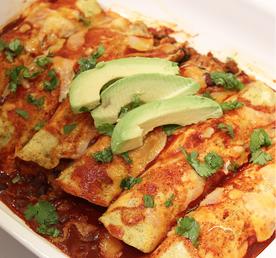 This month's recipes are made by the winners of our Nutrition Month recipe competition! Congratulations! Recipe #1 Spinach and bacon omelette by Emelia Dermott Ingredients: 1 tbs. olive oil 4 strips of bacon chopped 8 cherry tomatoes 2 handfuls of spinach 4 eggs Pinch of salt and pepper Directions: 1. Chop bacon, spinach, and cherry tomatoes 2. Add chopped bacon to a heated pan and cook until golden on the edges, drain the excess fat and set cooked bacon aside 3. Add olive oil to pan 4. Whisk together tomatoes, spinach, cooked bacon, and eggs adding to heated pan over medium low heat 5. Cover the pan and let cook for about 6 mins or until desired cook 6. Add salt to taste Recipe #2 Breakfast Enchiladas by Laurel Dix (RDN, LD) Ingredients: 8 large eggs 1/4 cup low-fat milk 1 Tbsp olive oil 1 onion, chopped garlic, minced 1 lb 99% lean turkey 2 cups spinach 1 cup sliced cherry tomatoes 1 1/2 cups black beans 1/2 cup enchilada sauce 1/2 cup reduced fat shredded Mexican cheese Toppings: cilantro, avocado, salsa Directions: 1. Preheat oven to 350. Whisk together eggs and milk until froth. Season with pepper. 2. Heat a skillet over medium heat. Add 1/4 cup of egg mixture and swirl pan. Cover with lid and cook for 3-5 minutes until the middle of the eggs are set. Remove from heat and repeat, making about 6 egg "tortillas." 3. Make filling: Add oil to a skillet over medium heat. Cook onions and garlic until onions appear translucent. Add turkey and cook until fully cooked. Add spinach, beans, tomatoes and stir until spinach has wilted. 4. Spread a thin layer of enchilada sauce into a baking pan. 5. On a cutting board, lay one egg tortilla. Top the centre with turkey & veggie filling. Roll tightly and place in the baking pan. 6. Repeat with the remaining tortillas. 7. Drizzle remaining enchilada sauce on top of tortillas and sprinkle with cheese. 8. Bake until cheese has melted, about 15 minutes. We hope you enjoyed this month's delicious recipes. Thank you again Emelia and Laurel for submitting these! If you decide to make these recipes, please tag Emelia, Laurel and ESN - we would love to see them! |
Categories
All
Archives
November 2021
|
- Home/ News
- About
- Services/ Store
- Media
-
Learning Center
- ESN Athletic and Healthy Lifestyle Learning Center >
-
Professional Learning Center
>
-
The ESN Sports Nutrition Certificate
>
- ESN Learning Center - Sports Nutrition Certificate Level 1 >
- ESN Learning Center Sports Nutrition Certificate Level 2 >
-
ESN Learning Center - Sports Nutrition Certificate Level 3
>
- Module 1 - Periodization for the Athlete
- Module 2 - Nutrition Strategies to Optimize Recovery
- Module 3 - Sports Nutrition for Children and Young Athletes
- Module 4 - Sports Nutrition for the Aging Athlete
- Module 5 - Nutritional Strategies for Injury Prevention and Concussions
- Module 6 - Nutritional Strategies for the Travelling Athlete
- Module 7 - Tournament Nutrition Strategies
-
The ESN Sports Nutrition Certificate
>
- Contact
Proudly powered by Weebly

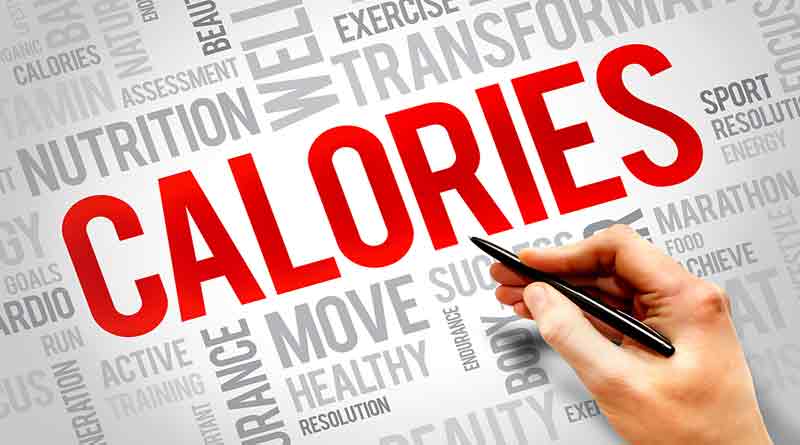
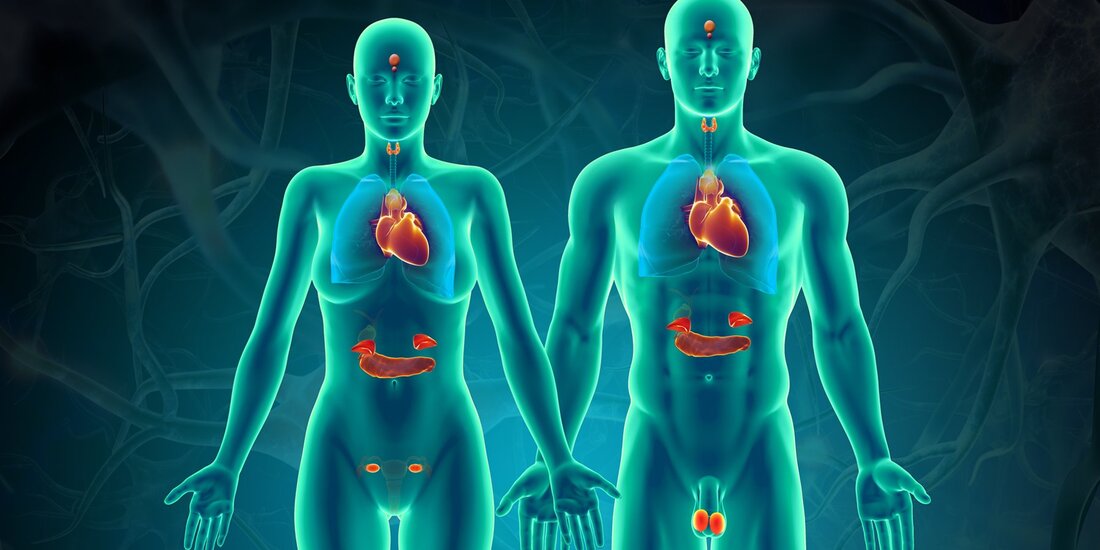



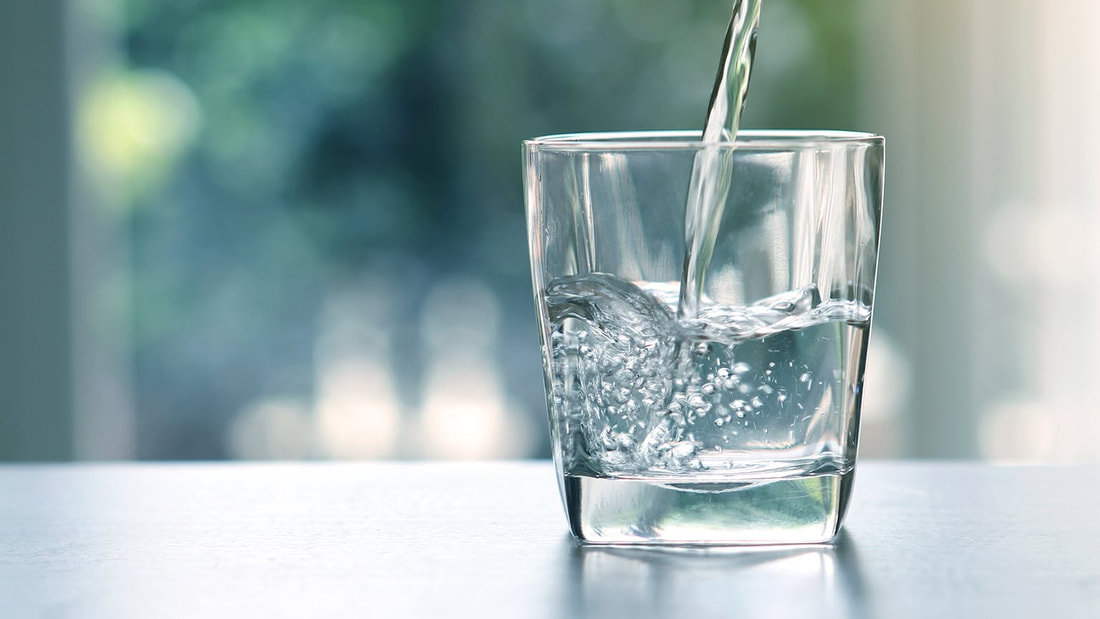


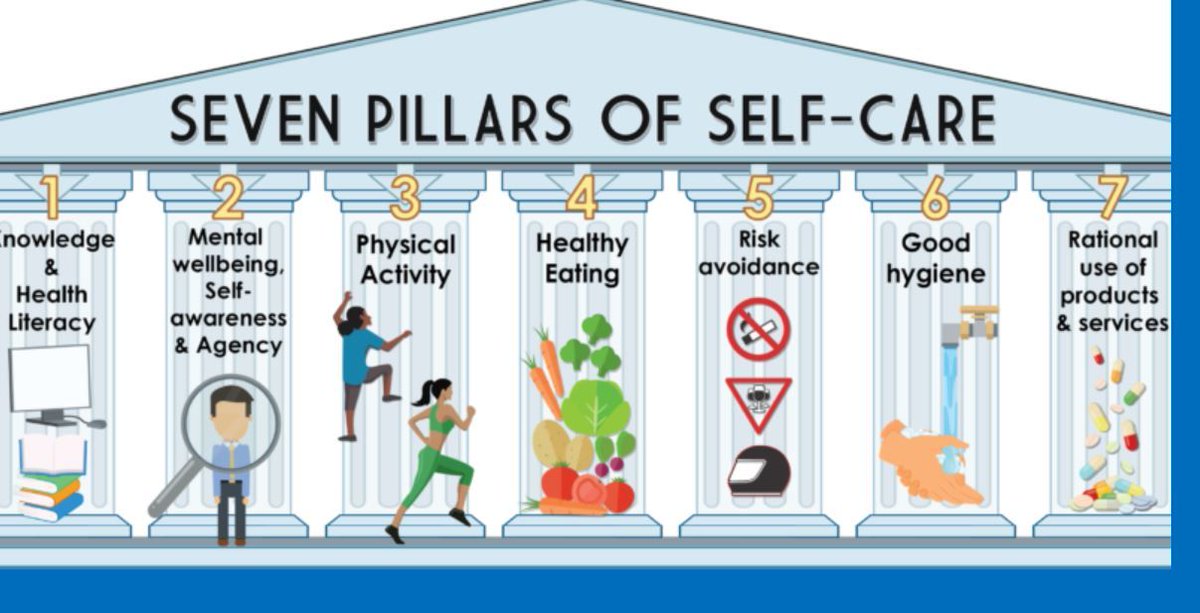

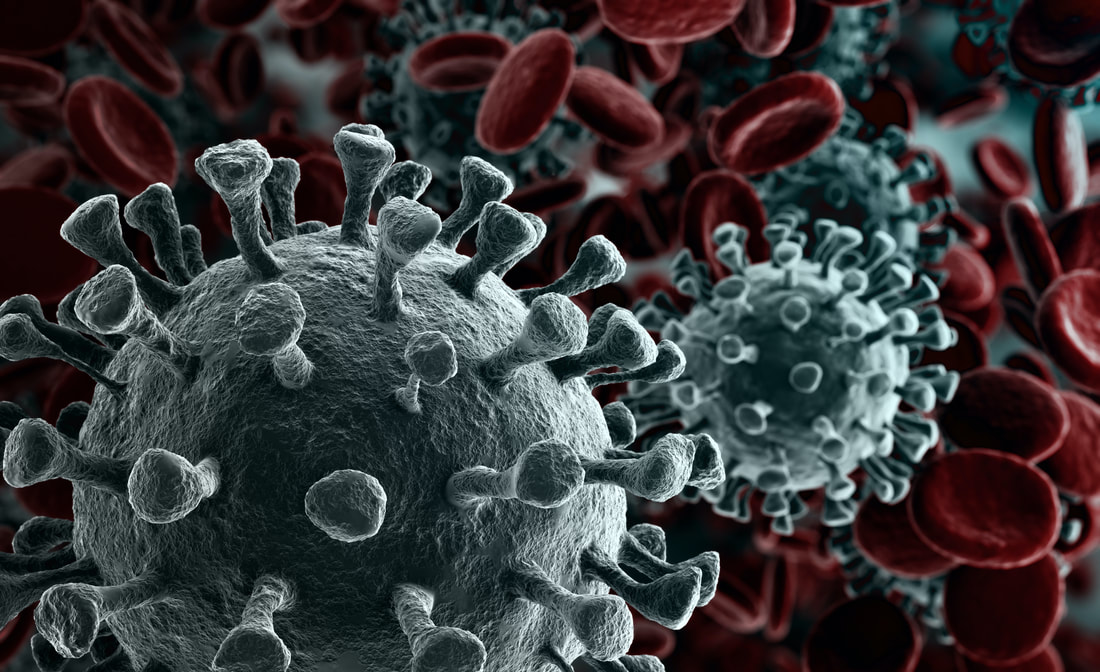

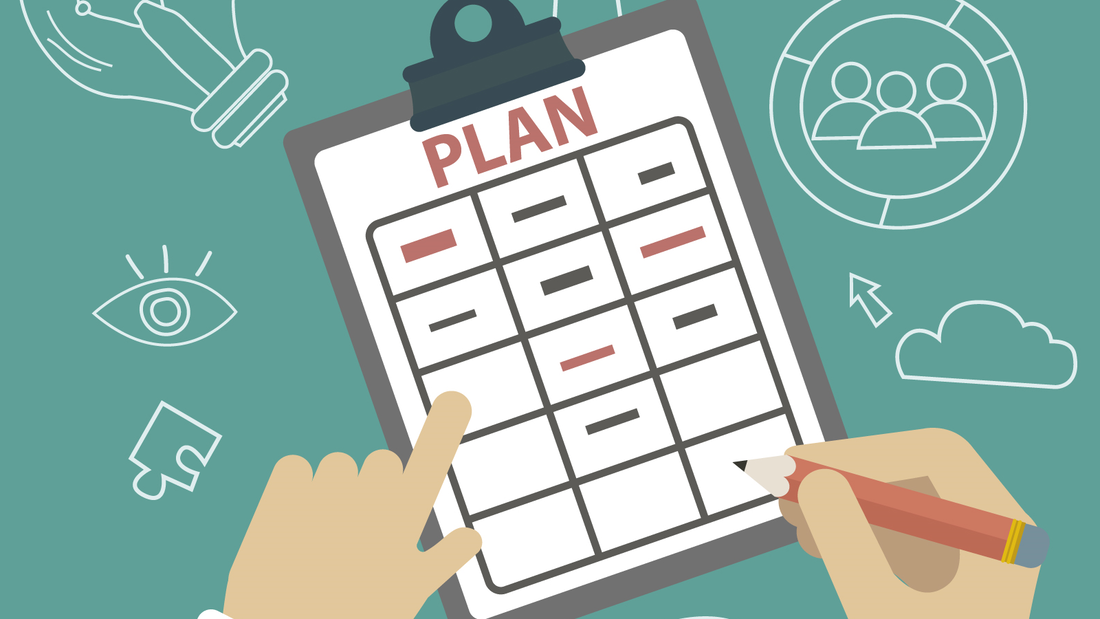
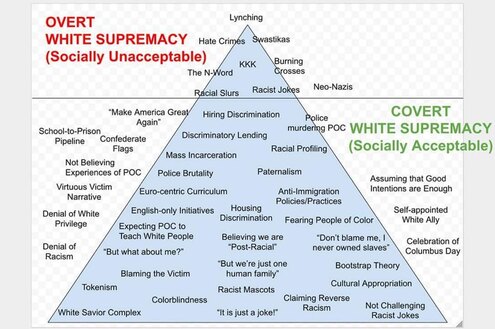


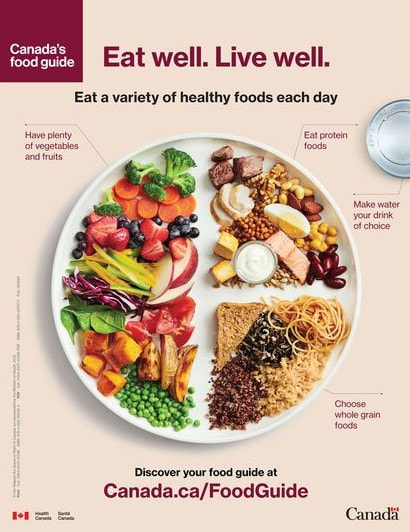
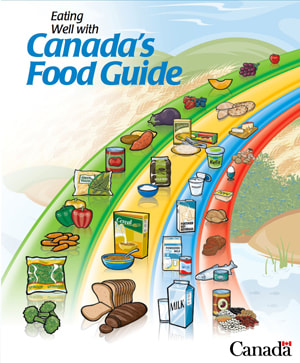
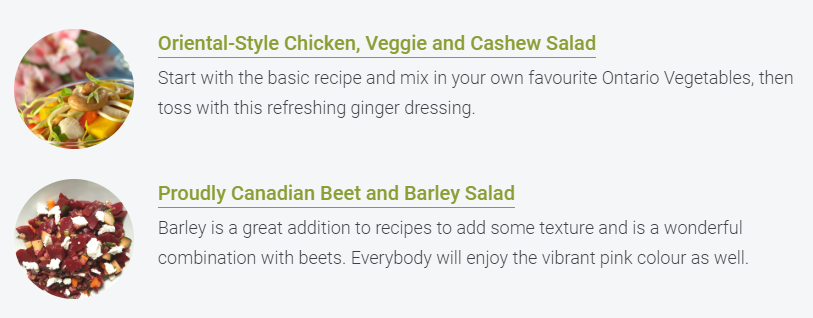





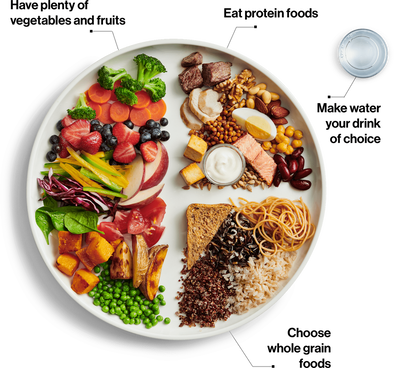
 RSS Feed
RSS Feed